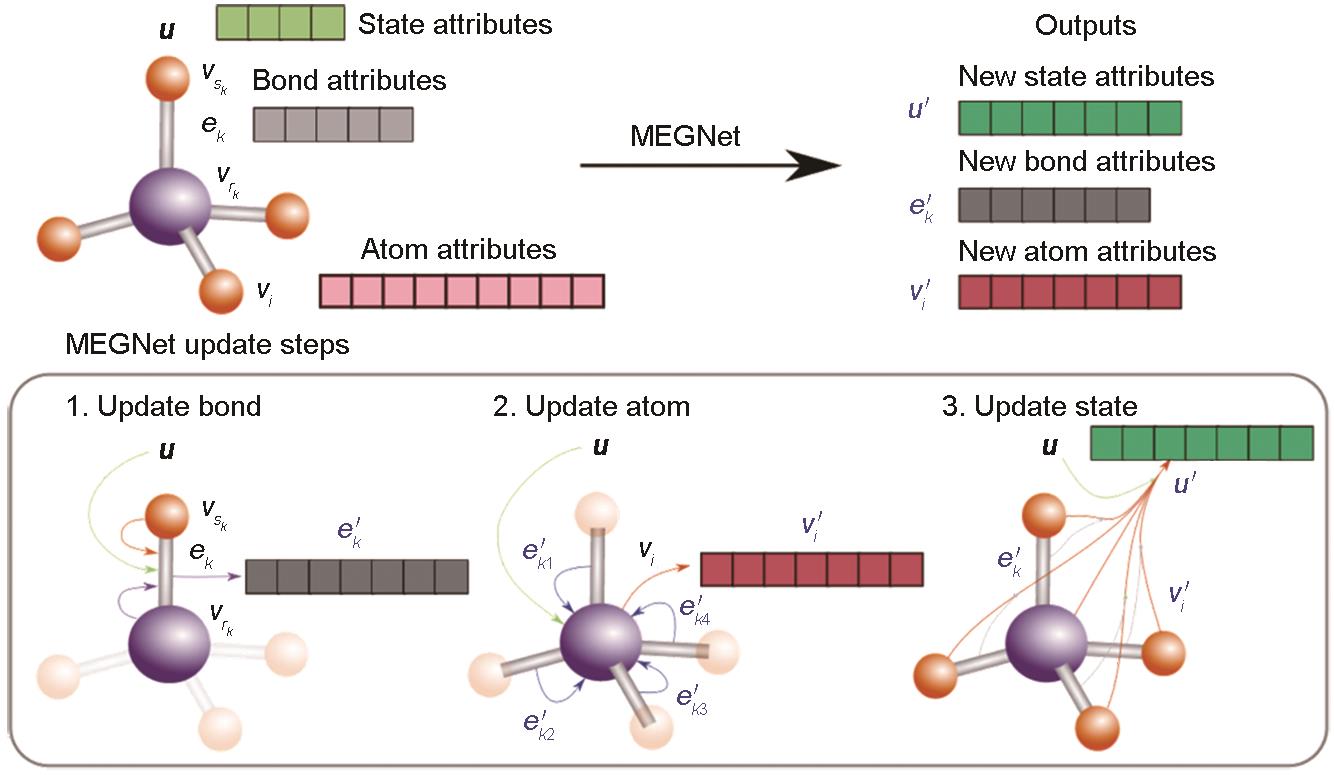机器学习型分子力场在金属材料相变与变形领域的研究进展
Machine-Learning Force Fields for Metallic Materials: Phase Transformations and Deformations

机器学习型分子力场在金属材料相变与变形领域的研究进展 |
| 李志尚, 赵龙, 宗洪祥, 丁向东 |
|
Machine-Learning Force Fields for Metallic Materials: Phase Transformations and Deformations |
| LI Zhishang, ZHAO Long, ZONG Hongxiang, DING Xiangdong |
| 图3 基于图表示的原子描述符构造示意图。初始图由原子属性集V = {vi }、键属性集E = {(ek, rk, sk )}和全局状态属性 u 表示。在第一个更新步骤中更新键属性。信息从形成键的原子、状态属性和前一个键属性流向新的键属性。随后,通过这3个信息先后更新原子属性和全局状态属性。最终形成新的图[ |
| Fig.3 Schematic of graph-based atomic descriptor. The initial graph is represented by the set of atomic attributes V = {vi }, bond attributes E = {(ek, rk, sk )}, and global state attributes u. In the first update step, the bond attributes are updated. Information flows from atoms that form the bond, the state attributes, and the previous bond attribute to the new bond attributes. Similarly, the second and third steps update the atomic and global state attributes, respectively, by information flow among all three attributes. The final result is a new graph representation[ |

|